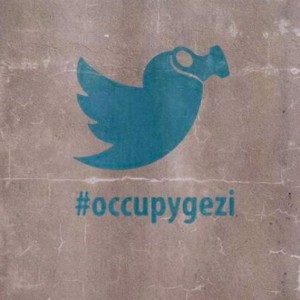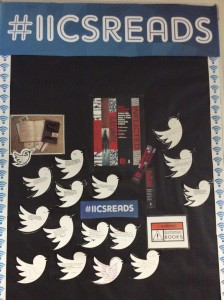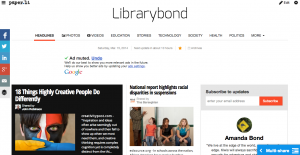“Good things, when short, are twice as good.” Baltasar Gracian #twitterquotes (Collins, 2009)
While I do follow some useful Twitter accounts I find the hashtags are the most useful way to follow events or broadcast to a group of people with similar interests. During conferences I tweet using the official conference hashtag. I often read back using the hashtag to see what my colleagues have noted or commented on. A hashtag can connect you with a group of like minded professional such as #tlchat which Teacher Librarians (TL) around the world use (Valenza, 2010). This particular hashtag not only collates posts from some leading TLs but it is now used for regular monthly discussions on topics with one session ‘live’ (TLChat Live, 2015). There are many blog posts giving TLs guidance on how to tune in to valuable discussion about their work (Rodriguez, 2014).
At the moment our Professional Learning Community (PLC) is focusing on how to buld a school culture of independent reading and our hashtag is #iicsreads. Not only do we tweet articles and photos to that hashtag as members of the PLC our students are using noticeboards with that hashtag to write up their reading quotes and tweets by hand.

(Kayabali, 2013)
One twitter hashtag my colleagues and I followed throughout the months of May and June in 2013 in Istanbul was #occupygezi. We all lived within a five minute walk of Gezi Park and Isitklal Cadessi. Both these areas saw clashes between protesters and riot police. There were clouds of tear gas, fireworks used as weapons and many people were injured. Each day we would follow the hashtag to see what protests were planned, see photos and video footage. We would decide on the safest route to walk home from the bus and alert each other as to what might be happening on our own streets next. Twitter was used as a way for the protesters to communicate with one another.
I do of course follow some key people, Joyce Valenza, Jude O’Connell and Ewan McIntosh are a few people I have had the privilege of hearing speak at conferences (a great source of people to follow). School Library Journal, Mashable, Scholastic, Awesome stories all constitute great sources of tweets. Then there are your favourite authors – many of whom are on twitter now as well.
At first I was worried about missing someone’s important tweet – the twitter sphere is very noisy at times. Then I was introduced to paperli. Paperli is a free web tool which uses the twitter content you are interested in and creates a daily paper (Paperli, n.d.). I have created my own daily paperli called “Librarybond” which curates my entire twitter feed. This year I created a new paperli for middle students following current events “News and Current Events Daily”.
Follow, hashtag, curate and retweet – twitter is a way to stay up date with breaking news in your neighbourhood and trends in your professional life.
References
Collins, T. (2009, June 5). “Good things, when short, are twice as good.” Baltasar Gracian #twitterquotes [Tweet]. Retrieved from https://twitter.com/TheLittleBookOf
Kayabali, Y. (2013, July 31). [Gezi park protest twitter bird]. Retrieved from http://www.creativereview.co.uk/cr-blog/2013/july/protest-art-in-real-time/
Paperli. (n.d.). Save Time and Money. Retrieved December 1, 2015, from http://paper.li/learn-more.html
Rodriguez, M. (2014, May 27). Top Twitter Hashtags for Librarians. Retrieved from http://hacklibraryschool.com/2014/05/27/hashtags/
TLChat Live. (2015, November 10). https://twitter.com/TLChat [Tweet]. Retrieved from https://twitter.com/TLChat
Valenza, J. (2010, December 30). For newbies: Just Heart the (#) Hashtag! [Blog post]. Retrieved from Never ending Search website: http://blogs.slj.com/neverendingsearch/2010/12/30/for-newbies-just-heart-the-hashtag/


